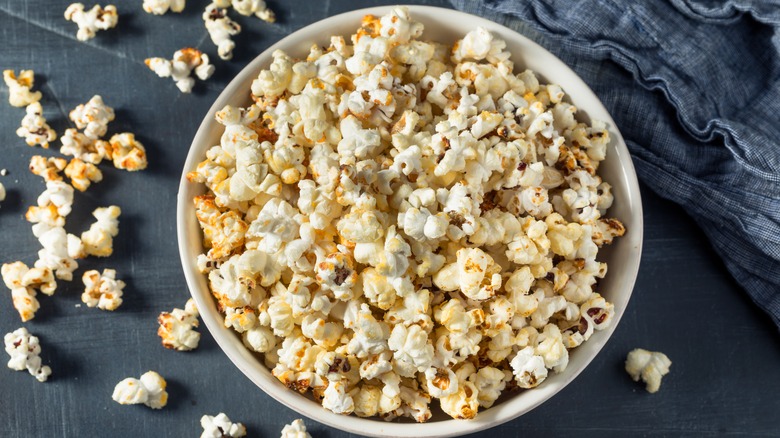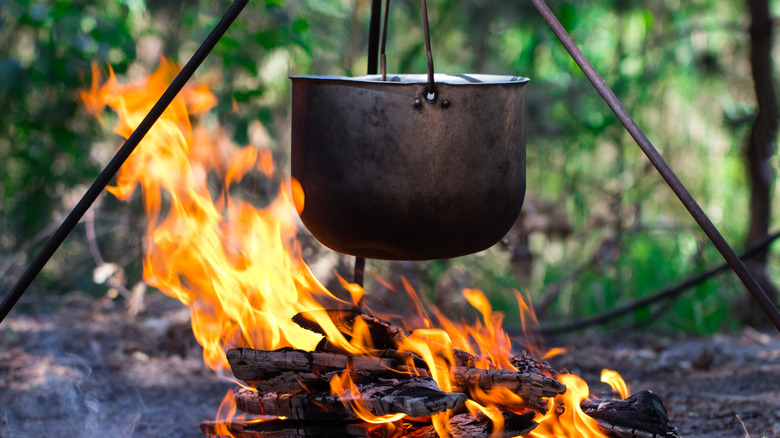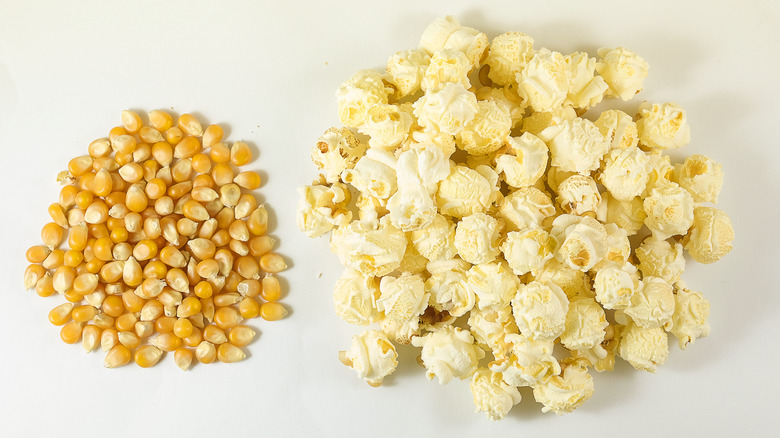Kettle Corn Vs. Regular Popcorn: What's The Difference?
If you've ever been to a carnival, street fair, or bustling farmers market, you know the smell. It's the smell of toasting sugar and heat radiating out of an enormous cast iron cauldron. It's something the Los Angeles Times says "tastes as good as it smells." It's kettle corn, and it is unlike its light, salty movie theater cousins. Kettle corn is defined by its flavor profile, which Best Darn Kettle Corn describes as "dominantly sweet ... with just a hint of salt noticeable to the palate." It is, essentially, the perfect balance between sweet and salty.
You might not think that there is anything overly special or different about kettle corn when compared to regular popcorn besides its sweet coating, but you'd be wrong. Apart from its distinct cooking method, kettle corn has its own storied history and is different from your average bag of popcorn — down to the kernel. We'll examine kettle corn's backstory and look at the unusual characteristics of the different types of popcorn kernels.
Kettle corns American story
The origins of kettle corn stretch back to the founding of the nation. According to America's Favorite Popcorn, it is suspected that 17th-century Dutch immigrants were responsible for bringing this delectable treat to America through their Pennsylvania settlements. The Los Angeles Times reports kettle corn became the celebratory by-product made using any remaining lard that hadn't been boiled down to tallow. The corn kernels were popped in an early version of a Dutch oven called a kettle — which, according to OvenSpot, looked more like cast iron cauldrons than the enamel-coated ones we see today. Some salt and sugar were added, and laborers had a nice post-work snack.
While we've swapped lard for vegetable oil, kettle corn remains extremely popular. As Popcorn for the People states, despite a brief lapse in popularity during the 1900s, kettle corn rebounded in the 2000s and continues to sell at festivals and in grocery stores. But what is it besides this history that makes kettle corn so much different from regular popcorn? It's all to do with the kernel.
It's all in the kernel
Yes, as surprising as it may seem, there are indeed different types of popping corn. According to the American Chemical Society, the two basic shapes of popcorn are known as butterfly and mushroom. Butterfly popcorn is defined by its open shape and light, crispy texture. This is the popcorn you'll find in most microwavable bags and movie theaters. Mushroom popcorn, conversely, is round, dense, and sturdy. Its wide surface area and ridged exterior texture make additional flavors cling to mushroom popcorn exceptionally well. This is why kettle corn is popped with mushroom kernels.
The popping methods between the two kernels are different as well. As Best Darn Kettlecorn puts it, your average movie theater popcorn is popped using oil and steam. Kettle corn, as we've seen, is almost always cooking in an oiled kettle over a live flame. There are, however, pre-packaged brands of kettle corn, as well as microwaveable options (via What the Popcorn). But if you want the real deal, buy a warm, fresh bag the next time you're at a fair. You won't regret it.


